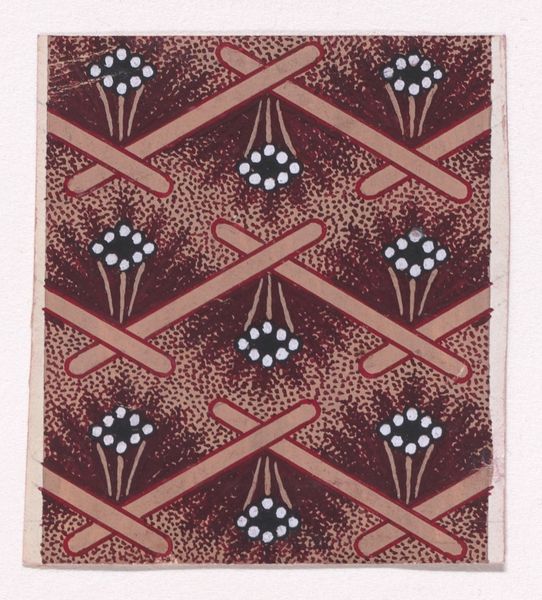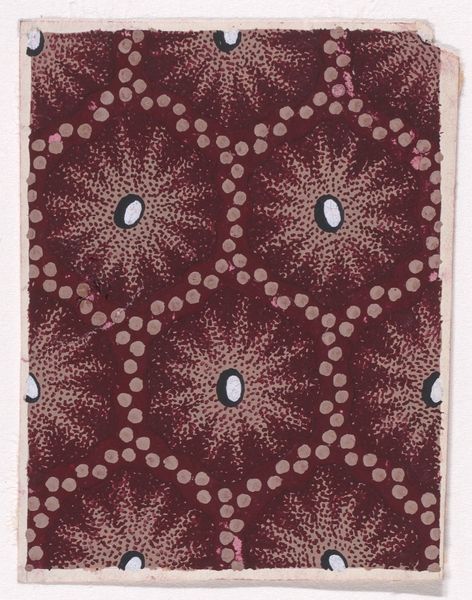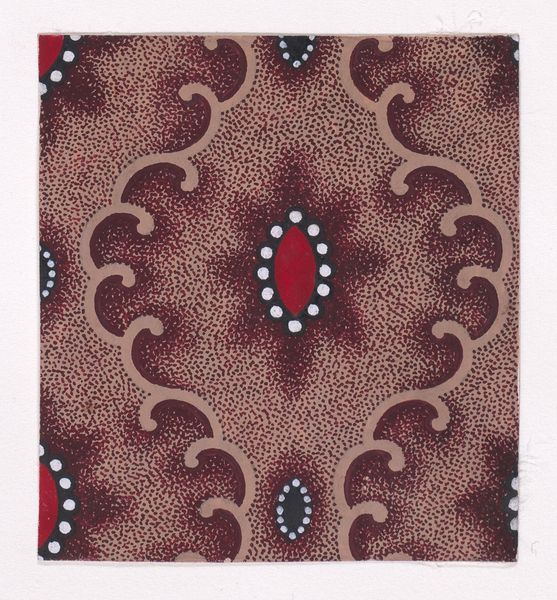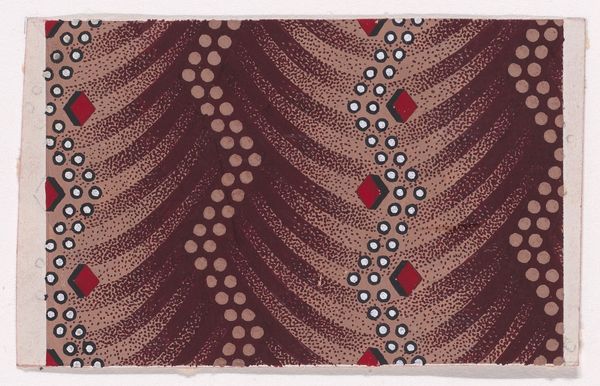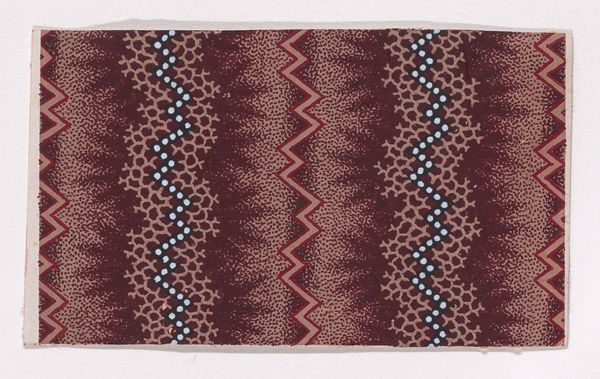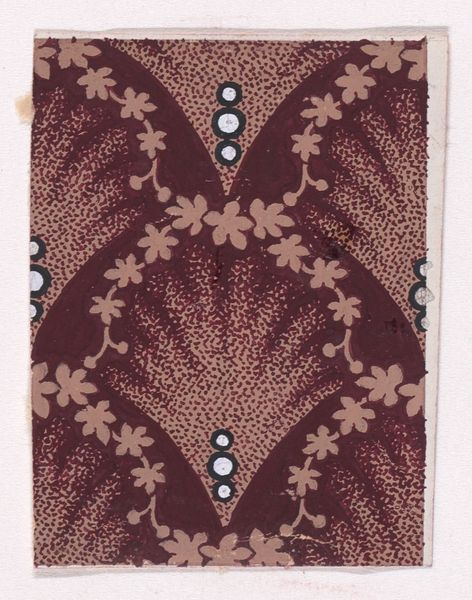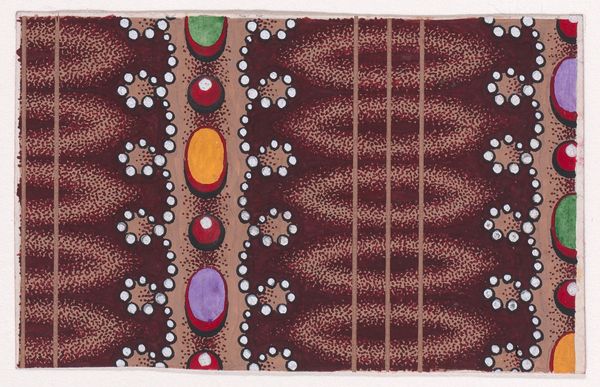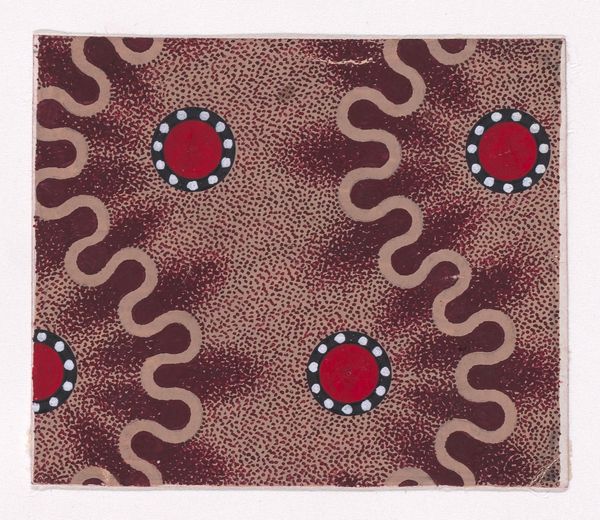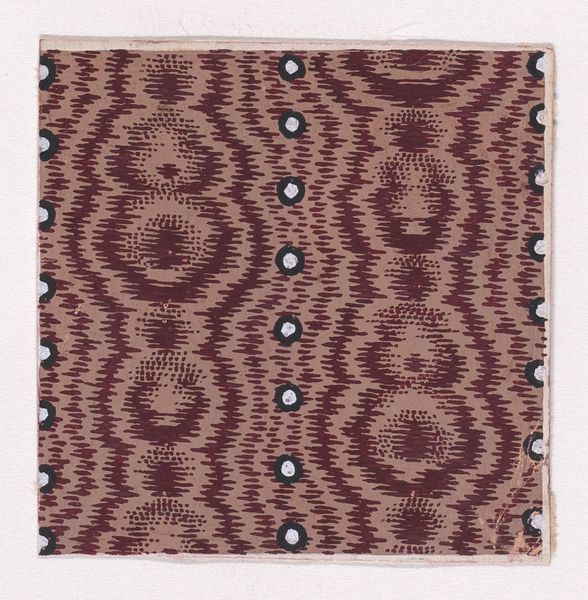
Textile Design with a Honeycomb Pattern Formed with Small Rosettes and with Alternating Rows of Hexagons Decorated with Pearls 1840
0:00
0:00
print, textile
# print
#
textile
#
fashion and textile design
#
pattern design
#
geometric
#
repetition of pattern
#
textile design
#
decorative-art
Dimensions: Sheet: 2 1/16 × 2 1/4 in. (5.2 × 5.7 cm)
Copyright: Public Domain
Curator: This intriguing textile design, conceived around 1840 by an anonymous artist, is housed here at the Metropolitan Museum of Art. Its full title is “Textile Design with a Honeycomb Pattern Formed with Small Rosettes and with Alternating Rows of Hexagons Decorated with Pearls.” Editor: Honeycomb is right! At first glance, I'm struck by the intricate layering of patterns. The small rosettes and pearl-like dots create a mesmerizing, almost hypnotic effect against that speckled background. Curator: It’s interesting to consider the socio-economic context for such a design. These repeating motifs, so prevalent in textile design during the 19th century, were very much dictated by industrial advances and consumerism. The rise of printed fabrics democratized fashion, making complex patterns more accessible to the middle classes. Editor: From a formal perspective, the use of color and shape plays a vital role. The limited color palette creates harmony. And the rosette form echoes throughout, providing visual unity. The speckled fill almost vibrates against the clearly articulated figures. Curator: Precisely. Furthermore, such designs also served as markers of identity and status. Access to certain patterns, dyes, and fabric qualities would signal a wearer's social standing, albeit within a rapidly changing fashion landscape influenced by new industrial methods. Editor: Right, it’s a snapshot of a very precise time in textile history. Those little dots almost feel like an early attempt at pointillism but here arranged purely for decorative intent within the pre-existing honeycomb and rosette grid. I’m also struck by how balanced, the design achieves equilibrium within what must have been stringent constraints. Curator: The democratization of textile patterns during the 19th century, and their appropriation in various social spheres, highlights their pivotal function beyond pure aesthetics, speaking volumes about broader societal shifts and evolving consumer habits. Editor: It offers a glimpse into both artistic principles of textile design, as well as providing a fascinating peek at the industry's wider impact at a specific time and location. Thank you.
Comments
No comments
Be the first to comment and join the conversation on the ultimate creative platform.
